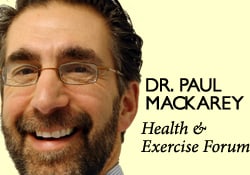
NEW RESEARCH DEMONSTRATES ONE TYPE OF EXERICSE MAY HAVE SUPERIOR FAT-BURNING AND ANTI-AGING BENEFITS
HIIT is the new hit! If the primary reason you exercise is to burn fat and lose weight than you many want to rethink your training program. High-intensity interval training (HIIT) is the “new buzz” in exercise. Like all new trends, participants are excited and quick to swear to its positive effects. As popular and common as exercise is little is known about the influence and impact it has at the cellular level. Over the past few years, researchers decided to explore the effects of HIIT. Last year, a research team at Mayo Clinic determined that HIIT exercises have anti-aging effects in the muscles at the cellular level. A more recent study published in the January issue of The British Journal of Sports Medicine decided to investigate the impact of HIIT on body fat.
The Mayo team chose 72 men and women and separated them into two groups; 30 and under and older than 64. All subjects were healthy but sedentary. Pre test analysis was performed for blood sugar levels, gene activity, muscle cell mitochondrial health, and aerobic fitness level. Group One: Vigorous weight training 3-5 times per week, Group Two: HIIT aerobic exercise on a stationary bike (pedaling hard and fast for four minutes followed by a recovery at a slow pace for three minutes then repeating the sequence 3 or more times) 3 times per week, Group Three: Moderate aerobic exercise on a stationary bike for 30 minutes 2-3 days per week and light weight lifting on the other 2-3 days, Group Four: Control group who did not exercise. After 12 weeks, lab tests were repeated and data compiled and analyzed.
The British Journal publication was a retrospective review of 36 studies involving more than 1,000 participants, young and old, male and female. The purpose of the inquiry was to compare body fat changes before and after two different types of exercise: Group One: moderate-exercise routines including walking, running, cycling or swimming for at least 45-60 minutes. Group Two: 30-40 minutes of high-intensity interval training (HIIT), including a warm-up and cool-down.
Both groups performed their exercise routines for at least 4 weeks and had pre and post body fat analysis.
The Mayo study found all three experimental groups improved in fitness level and blood sugar regulation. As expected, the vigorous weight training group, showed the greatest gains in muscle mass and strength. Also, not surprising, the HIIT group, had the greatest gains in endurance. However, the most unexpected results came when retesting the muscle cells by biopsy. Only the HIIT group demonstrated the most significant improvement in the activity levels of their genes in both the young and older groups, when compared to the vigorous weight training and moderate exercise groups.
It is well know that loss of muscle mass and strength is common with age. Specifically, older muscles have been found to regenerate slowly and incompletely and the problem runs as deep as the cellular level as the mitochondria diminish in quality and quantity. However, this study suggests that HIIT can actually regenerate and reverse the aging mitochondria. Healthier mitochondria are able to produce energy for muscle cells to function at a higher level.
In addition to anti-aging, HIIT may also address the number one reason people exercise; to burn fat and lose weight. The good news is that all forms of endurance exercise moderate or intense, promote weight loss when compared to controls. However, HIIT allows participants to lose a significantly greater amount of body fat in a shorter amount of time (30 minutes compared to one hour).
Interval aerobic exercise can have anti-aging effects. In fact, the older your muscles, the more you will benefit from, not just moderate exercise, but more vigorous interval aerobic exercise. Furthermore, interval training may be applied, not only to aerobic exercise, but to weight training for the upper and lower body. According to the American College of Sports Medicine, high intensity interval training, also called HIIT workouts, involves a repetition of a series of high-intensity exercise (aerobic or weight training) for a specific period of time (3-5 minutes) followed by a specific period of rest or low-intensity exercise (1-3 minutes). The intensity can be increased by speed or resistance.
Depending on one’s ability to tolerate higher intensity exercises, it may be wise to consider incorporating HIIT into your exercise routine. However, do not attempt to increase the intensity of your exercise program without consulting with your physician first. Once medially approved, consult with a doctor of physical therapy to create a program specifically designed for you.
Visit your doctor regularly and listen to your body.
Keep moving, eat healthy foods, exercise regularly, and live long and well!
NEXT MONDAY – Read Dr. Paul J. Mackarey “Health & Exercise Forum!”
This article is not intended as a substitute for medical treatment. If you have questions related to your medical condition, please contact your family physician. For further inquires related to this topic email: drpmackarey@msn.com
Paul J. Mackarey PT, DHSc, OCS is a Doctor in Health Sciences specializing in orthopaedic and sports physical therapy. Dr. Mackarey is in private practice and is an associate professor of clinical medicine at GCSOM.